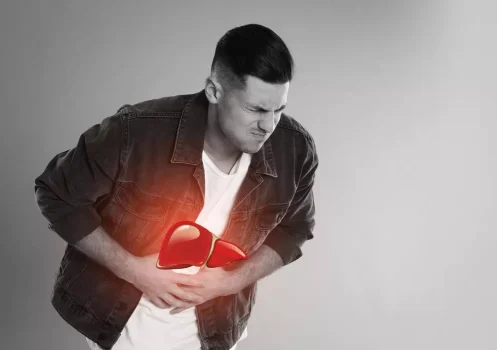
Cross-species findings show comparability in effects of alcohol use on the adolescent brain and behavior, and novel experimental rodent studies on the consequences of alcohol use can guide future work in human adolescents. For instance, researchers are now focused on quantification of various neurochemicals and transmitters in the brain measured through Magnetic Resonance Spectroscopy (MRS; (151). Understanding such neurochemical changes could help us better understand the neurobiological effects of substance use, the mechanisms of change, and alterations incurred through psychotherapy or pharmacological treatment. Studies that have compared equivalent exposures to alcohol in adolescent and adult animals have found that the effects of alcohol exposure during adulthood are generally less pronounced than after comparable alcohol exposure in adolescence (116). Adolescents are less sensitive than adults to many of the intoxicating alcohol effects that serve as cues to stop drinking, such as alcohol’s motor-impairing, sedative, social-inhibiting, and hangover-inducing effects (117).
- In most states and local jurisdictions, use of alcohol by underage individuals is illegal, though there are a few exceptions.
- Using inhalants even once can lead to overdose, suffocation, seizures, and death.
- Use of alcohol is one way to challenge this authority, but children and adolescents do not fully understand the risks on their health and behavior.
Risk Factors for High-Risk Substance Use
Alcohol stimulates the release of innate pro-inflammatory cytokines that can disrupt synaptic plasticity and lead to neuropathology and cell death (136, 137). Studies including male and female mice demonstrate that females are more vulnerable than males to the neuroinflammatory effects of alcohol (138). Rodent studies have examined ways to reduce neuroinflammation caused from adolescent alcohol use.
Why Do So Many Youth Drink?

The teenage brain is like a construction site – lots of remodeling going on. Addiction during this crucial period can seriously mess with brain development. We’re talking potential damage to areas responsible for decision-making, impulse control, and emotional regulation. It’s like building a house on a shaky foundation – things might look okay for a while, but problems will crop up down the line. Let’s talk about the elephant in the room – the long-term consequences of teen addiction. It’s not just about the here and now; addiction can cast a long shadow over a person’s entire life.
Signs of Teenage Alcoholism
Ask a sober adult to drive you instead or call a cab or car service. If you’re going to a party and you know there will be alcohol, plan your strategy in advance. You and a friend can develop a signal for when it’s time to teenage alcoholism leave, for example. You can also make sure that you have plans to do something besides just hanging out in someone’s basement drinking beer all night. Plan a trip to the movies, the mall, a concert, or a sports event.
How Can Parents Prevent Teenage Drug Use?

Alcohol overdose occurs when there is so much alcohol in the bloodstream that the areas of the brain controlling basic life-support systems—such as breathing, heart rate, and temperature control—begin to shut down. If you suspect someone is experiencing an alcohol overdose, get medical help immediately. Cold showers, hot coffee, food, or walking will NOT reverse the effects of alcohol overdose and could actually make things worse. Know where and how to get treatment and other support services and resources, including counseling or therapy (in person or through telehealth services). Excessive alcohol use can harm people who drink and those around them.

Recognizing The Signs Of Teenage Alcoholism
- This article reviews statistics, risk factors, health effects, signs, and treatment for teenage drug addiction.
- For youth in the first stage of alcohol use (having access but not having yet used alcohol), preventive measures are used.
- Social relationships can suffer too, with addicted teens often withdrawing from family and longtime friends in favor of new, potentially problematic social circles.
- But what exactly do we mean when we talk about addiction in teens?
- It also includes binge drinking — a pattern of drinking where a male has five or more drinks within two hours or a female has at least four drinks within two hours.
You might also organize your friends into a volleyball, bowling, or softball team — any activity that gets you moving. Drinking can damage a student’s ability to study well and https://ecosoberhouse.com/ get decent grades, as well as affect sports performance (the coordination thing). Alcohol is a depressant, which means it slows the function of the central nervous system.
What Are the Health Risks of Drug Abuse?
- Genetic, psychological, social and environmental factors can impact how drinking alcohol affects your body and behavior.
- Marijuana can impair concentration, worsen mental health, interfere with prescription medications, lead to risky sexual behaviors, or contribute to dangerous driving.
- The constant need for likes, comments, and followers can become an all-consuming obsession.
- Alcohol overdose occurs when there is so much alcohol in the bloodstream that the areas of the brain controlling basic life-support systems—such as breathing, heart rate, and temperature control—begin to shut down.
Agree a plan with your child in advanceIf you decide they’re allowed to go, have clear consequences if they break your agreement. Remind them that if they take alcohol from your house without your permission, you would regard it as stealing. Teens who drink put themselves at risk for obvious problems with the law (it’s illegal; you can get arrested). Teens who drink are also more likely to get into fights and commit crimes than those who don’t.
- Agree a plan with your child in advanceIf you decide they’re allowed to go, have clear consequences if they break your agreement.
- These warning signs do not necessarily mean a teen is using drugs.
- Depression, anxiety, ADHD, and other mental health conditions can increase the risk of substance abuse.
- Additionally, the NIAAA notes that people who start drinking before age 15 are more than three times as likely to develop AUD as an adult than people who waited until age 21 to start drinking.
Sex-related neuropsychological consequences of alcohol use
